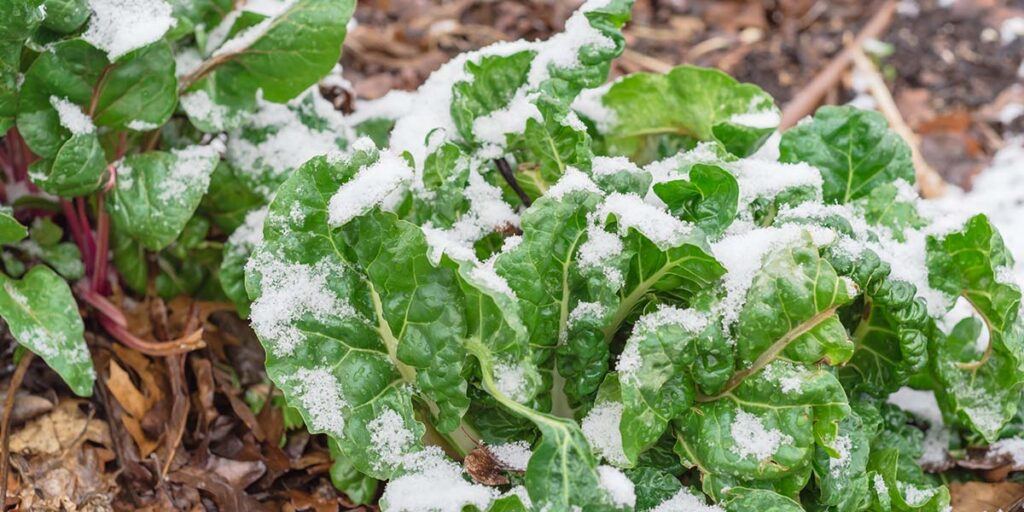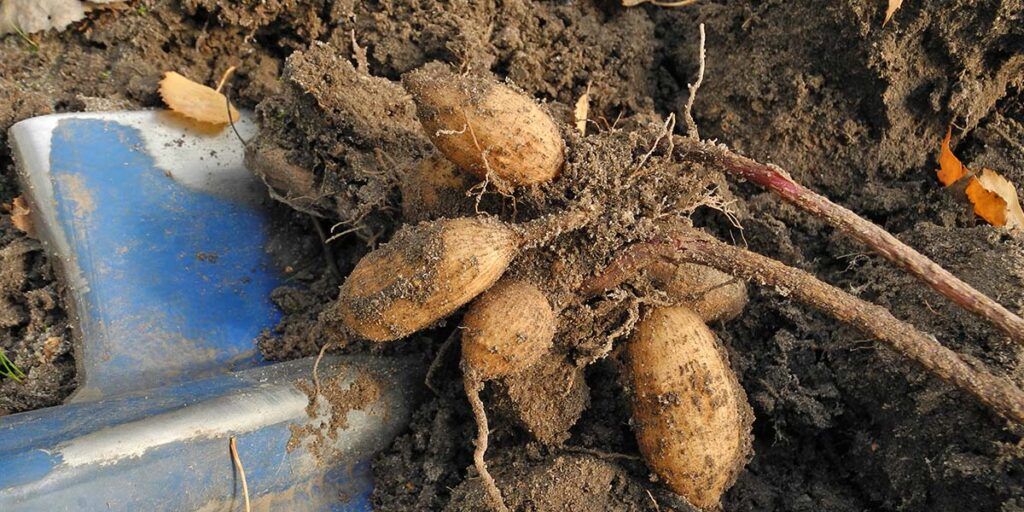
By Angelo Randaci, Earth’s Ally Horticulturist
Angelo’s passion for plants has led him to explore many areas of horticulture including research, grounds management, technical training, design and nursery management.
Fall Garden Cleanup and Autumn Garden Maintenance
One of my favorite gardening chores is cleaning-up and cutting-back garden plants in the autumn and early winter. In fact, it’s not a chore at all. It’s a great time to re-shape or rearrange my plantings. But keep in mind some plants are overwintering homes for beneficial insects so those can be left in the garden. Removing diseased plants, or plants that don’t have any aesthetic interest is important for the health of next year’s garden.
It is best to strike a balance between fall and spring cleanup. Cleaning your gardens during the fall and winter months gives both advantages and disadvantages over a spring garden cleanup. The main advantage to fall cleanup is it prevents the spread of disease and insect pests from the current season into the next. Leaving some plants give beneficial insects a place to over-winter. If you have been removing plant debris throughout the growing season, cleanup will be easy. And fall cleanup allows you to concentrate on spring planting.
Begin your fall garden preparation any time after a killing frost when perennials begin to go dormant. Cutting back too early in the fall before they are dormant may cause the plants to send out new growth susceptible to freeze damage.
General Cleanup & Weeding Checklist
- Remove and Clean Supports. Remove plant supports such as tomato cages, plant stakes, and trellises. Before storing them, clean off soil and wash with soapy water. Spray plant supports that supported diseased plants with isopropyl alcohol that is in 70-100% solution alcohol to kill off any diseases.
- Plant Perennials Before Winter. Plant new perennials and divide established perennial clumps. Do this during early fall to allow them to produce roots before winter. Plant tulips, daffodils, and other bulbs for spring color.
- Lay Down Mulch. Add a protective layer of mulch to any bare areas of your garden. Do not apply mulch up against tree or shrub stems. This will attract rodents which will feed on the bark during winter.
- Bring Houseplants Indoors. Bring houseplants indoors when night temperatures fall below 50°F. Check for insects and spray with Earth’s All Insect Control to safely knockdown any pests before bringing them in. Pot up annuals such as geraniums, begonias, marigolds and impatiens to bring indoors for winter bloom.
- Remove Weeds and Debris. Remove dead plants and plant debris including dry bits of leftover vegetables, fruits, and other waste. Pests and disease may overwinter in plant debris and make a comeback next year. Pull out garden weeds by hand or spray with Earth’s Ally Weed & Grass Killer. Annual weeds such as chickweed, crabgrass, and lambs-quarters die at first frost, but not before dropping seeds for next year. Perennial weeds like dandelion, ground ivy and white clover will remain throughout the winter so best to remove them now. This will be your last weeding for the year, so be thorough. Do your weeding after a rain for easier removal.
How to Winterize A Veggie Garden
Some vegetables can be left in the garden for a longer harvest. Beets, lettuce, chard, carrots, endive, parsley, pumpkins and celery are considered semi-hardy and will withstand air temperatures of 28°F to 32°F. Other veggies including kale, broccoli, cabbage, chicory, mustard, radish and Brussel sprouts can survive in even lower temperatures below 28°F. These vegetables will extend your growing season through the early cooler periods.

Swiss chard is considered semi-hardy and will survive cold temperatures.
Plant perennial vegetables in separate areas of your garden. They will produce year after year and only need cutting back during winter or before new growth commences in the spring. These include asparagus, horseradish, garlic chives, rhubarb, and chives. Both garlic chives and regular chives will make wonderful additions to both your veggie and perennial garden with their beautiful display of purple flowers which are also edible.
Transfer carrot plants to your perennial garden. They will produce lacy white, flowers for a beautiful display during their second year.
Start A Compost Pile
If you haven’t started a compost pile, now is a good time to do so as this is a great way to recycle organic materials and turn it into rich humus for next year’s crop. Shred leaves and add to the compost or garden beds. Leave a pile of leaves in an out of the way area for wildlife. If you had any diseased plants, remove them from your garden area. Do not risk spreading disease by adding them to your compost. Put all diseased plants in the trash or burn pile.

Plant crimson clover in the fall to grow as a cover crop. It will bloom from early to mid-May in the northeast, improving the soil and attracting pollinators to the garden.
Consider sowing a cover crop, it’s like growing a compost crop to feed your soil. Cover crops are plants used to cover the soil when it is not in use. Cover crops help control weeds, add organic matter, nutrients, help prevent erosion, and feed beneficial organisms vital to healthy soil maintenance. The cover crop acts as a living mulch during the winter months and is turned in in the spring before planting. Once it is turned into the garden it becomes a green manure. Fall-planted cover crops include winter wheat, annual rye grass, red clover and hairy vetch and others. Check with your local county extension for cover crops that grow best in your area. If not planting a cover crop, add 2-4 inches of mulch and or compost to your garden.
Garden Aesthetics

Perennials such as coneflowers and ornamental grasses provide interest from late fall until spring.
Keep in mind winter interest. Many perennials such as coneflowers, rudbeckias, and fall blooming sedums will maintain presence during the winter months. Ornamental grasses will persist all winter long and won’t need cutting back until early spring. Besides winter interest, the seed heads of coneflowers will provide food for birds. While most perennials do not need cutting back until spring, remove plant debris from peonies, roses, fruit trees, or any plants showing signs of disease. Cut back bearded iris and lilies because iris borers overwinter in and on the foliage. If you had problems with powdery mildew or black spot on rose leaves, thoroughly remove all debris from around your plants. Spray with Earth’s Ally Disease Control and sterilize pruning shears before moving to the next plant.
Beneficial Insects
You do not need to cut back and clean up all your plants. Leaving a portion of the garden until spring has advantages. Pollinators such as native bees and butterflies need protection from the cold weather. Some overwinter in hollow plant stems and debris on the ground. Some butterflies overwinter as adults in leaf litter and bark. Butterflies that overwinter as chrysalis occupy dead plant stems and leaf litter. Ladybugs and other predatory insects, which consume plant eating pests overwinter under leaves or attached to plant stems.
Bulbs
Dig up tender bulbs such as dahlia tubers, gladiolus corms, and canna rhizomes after the first frost. Cut off the stems a few inches above them, remove the soil and let them dry for a few days. Store them in paper bags in a cool, dry area until spring planting time. If you are color-coordinating your garden, be sure to mark the colors/varieties on the bags.

Dahlia tubers can be dug up after the first frost and stored for next year’s color.
Trees and Shrubs
Remove any dead branches on your trees and shrubs. You can do this anytime throughout the year but wait until the plants are dormant before pruning live wood. This is also a perfect time to shape and thin your plants while you can easily see the branching structures. Do not prune spring flowering plants until after they have bloomed.
Garden Notes

Keep a journal for a written record of your garden.
You can make notes on what worked, what didn’t as well as any changes to your garden plan. Make note of what plants were grown where so you can practice crop rotation to avoid pests and diseases specific to certain plants and to avoid depleting soil of the same nutrients every year. Record any issues with pests or disease, which plants were damaged and when. Record where you planted certain veggies so you can practice crop rotation. Your journal can include sketches of your garden plan each season, pictures of your garden, plant sources, expenses along with receipts or any other pertinent information.
We’d love to hear how Earth’s Ally is helping you with autumn garden clean up. Share your experience and stay connected with the #EarthsAlly community on Facebook, Instagram and Twitter for access to our latest blog posts, giveaways and exclusive promotions.
